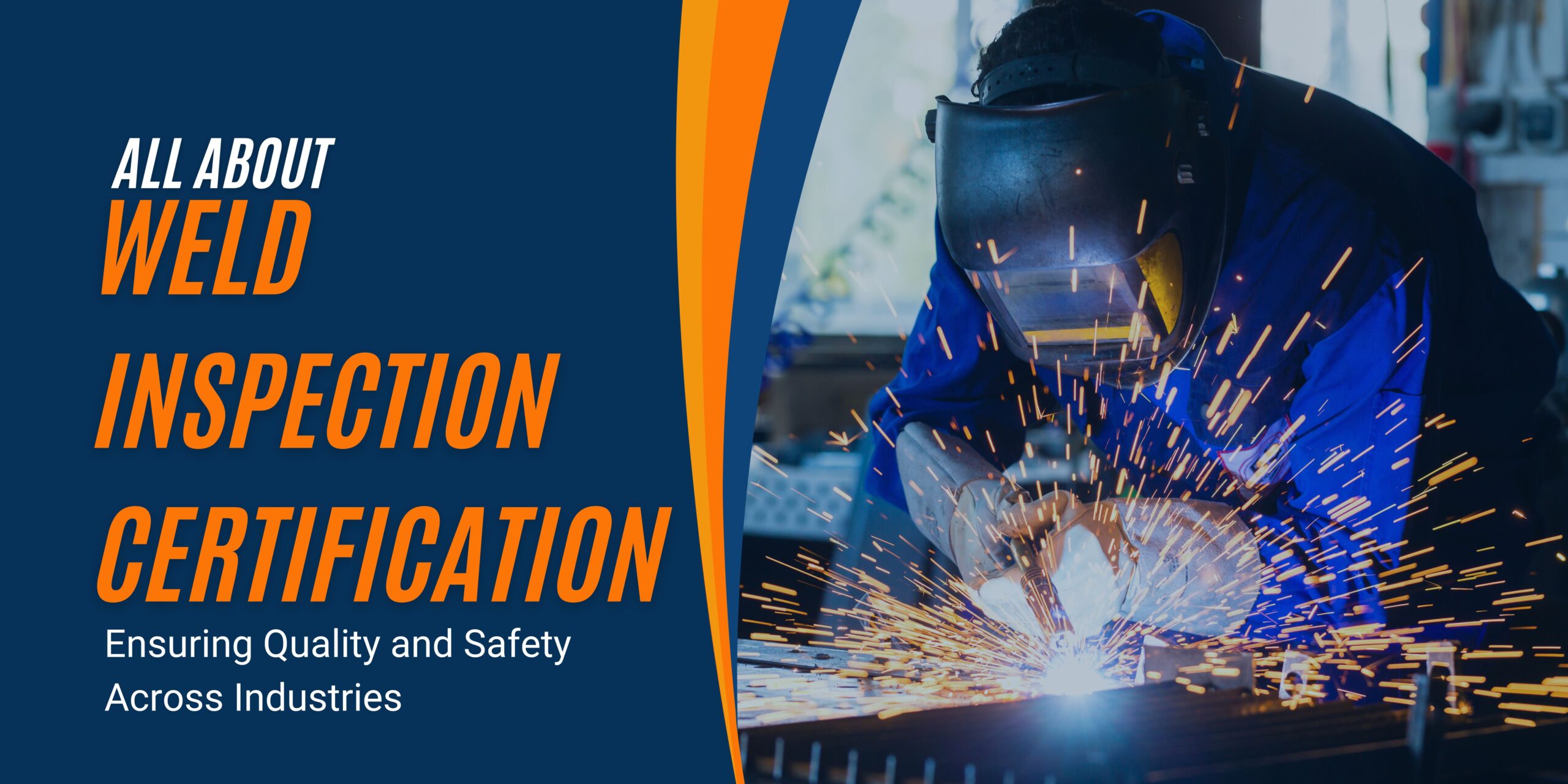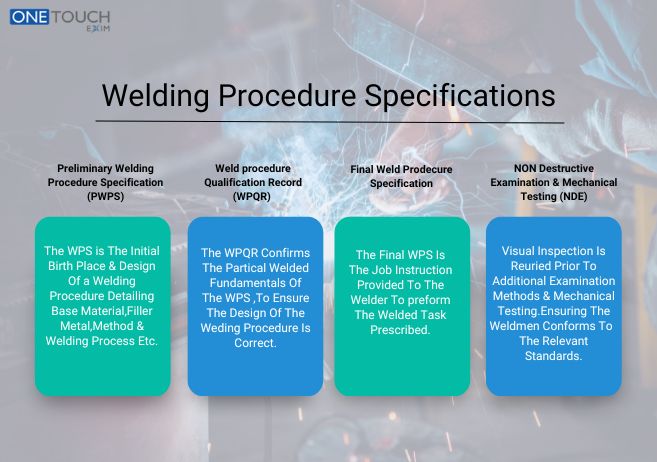How Welding Inspection Racine Makes Sure Security and Compliance
How Welding Inspection Racine Makes Sure Security and Compliance
Blog Article
Innovative Techniques to Fillet Weld Assessment and Screening: Enhancing Weld Top Quality and Compliance Requirements
In the world of welding, the high quality and stability of fillet welds play a critical function in making sure the architectural sturdiness and integrity of numerous industrial elements. With the constant drive for enhanced performance and conformity with strict standards, the expedition of ingenious techniques to fillet weld assessment and screening has actually become crucial.
Advanced Non-Destructive Testing Approaches
Utilizing advanced technologies, progressed non-destructive screening techniques play a crucial role in guaranteeing the stability and top quality of fillet welds. These techniques, such as phased range ultrasonic testing (PAUT) and magnetic particle screening (MPT), deal in-depth understandings right into the weld's interior framework without causing any type of damages to the material. PAUT, for example, makes use of multiple ultrasonic aspects to examine the weld from different angles, offering a comprehensive visualization of possible problems like absence of blend or fractures.
Likewise, MPT works in identifying surface-breaking flaws by applying an electromagnetic field and iron fragments to the weld area. This technique is specifically useful for recognizing suspensions that might compromise the weld's strength. By employing these sophisticated non-destructive screening techniques, weld inspectors can precisely evaluate the quality of fillet welds, making sure compliance with sector requirements and policies. The capability to detect imperfections early not only boosts weld top quality but also stops pricey rework or failures in architectural honesty, underscoring the significance of these ingenious testing methods in welding assessments.
Robotics and Automation in Inspection
The integration of robotics and automation has transformed the examination process for fillet welds, boosting effectiveness and accuracy in top quality assessment. Robotics offer specific control and repeatability in checking welds, guaranteeing trustworthy and constant outcomes. Automated systems can be set to follow details examination courses, guaranteeing comprehensive protection of welds and decreasing the risk of human error.
Robot inspection systems outfitted with sophisticated sensing units can spot and measure weld functions with high accuracy, supplying in-depth information for analysis. These systems can recognize flaws such as fractures, lack of blend, and porosity, enabling timely restorative activities to be taken. Furthermore, robotics and automation enable real-time information collection and analysis, supplying instant responses to operators and promoting fast decision-making procedures.
Moreover, using robotics and automation in fillet weld evaluation boosts total productivity by minimizing evaluation times and enhancing assessment throughput. By simplifying the assessment procedure, producers can ensure weld quality and conformity standards are satisfied successfully, eventually leading to cost savings and improved product top quality.
Utilizing Artificial Intelligence for Analysis
Artificial intelligence plays a pivotal duty in boosting the performance and accuracy of analysis in fillet weld inspection processes. AI formulas can swiftly process large amounts of data from weld inspections, identifying problems or variances that might be challenging to identify with the nude eye - Welding Inspection Racine.
In addition, AI systems can gain from previous assessment data, consistently boosting their capacity to recognize possible problems and variances in fillet welds. This adaptive knowing ability improves the total quality assurance procedure, reducing the likelihood of human error and making sure that welds meet the required criteria. By integrating man-made intelligence right into fillet weld analysis, sectors can accomplish greater degrees of efficiency, uniformity, and conformity in their assessment techniques.
Portable Equipment for On-Site Examination
 Enhancing field evaluation efficiency, the adoption of mobile tools changes on-site assessment procedures for fillet welds. These devices use adaptability and benefit, allowing examiners to carry out comprehensive examinations in numerous locations, consisting of difficult or remote atmospheres. Portable devices such as ultrasonic screening tools, magnetic fragment inspection tools, and electronic radiography systems offer real-time data and high-resolution imaging capacities, making it possible for fast decision-making and immediate comments on weld high quality.
Enhancing field evaluation efficiency, the adoption of mobile tools changes on-site assessment procedures for fillet welds. These devices use adaptability and benefit, allowing examiners to carry out comprehensive examinations in numerous locations, consisting of difficult or remote atmospheres. Portable devices such as ultrasonic screening tools, magnetic fragment inspection tools, and electronic radiography systems offer real-time data and high-resolution imaging capacities, making it possible for fast decision-making and immediate comments on weld high quality.One substantial advantage of mobile devices is their capability to simplify inspection treatments, decreasing downtime and boosting total productivity. Assessors can easily transfer these tools to various task websites, removing the requirement for carrying hefty machinery or components to off-site centers. Furthermore, the transportability of these devices advertises cost-effectiveness by reducing transportation expenditures and speeding up examination timelines.
Additionally, using mobile devices for on-site assessment advertises aggressive quality assurance steps, as assessors can immediately identify and address any possible welding flaws or inconsistencies. By integrating these ingenious modern technologies into on-site assessment techniques, welding specialists can make certain conformity with industry requirements and boost weld top quality, eventually causing enhanced structural honesty and security in various welding applications.
Assimilation of Data Administration Solution
Having enhanced on-site assessment procedures through the usage of portable devices, the next stage entails the seamless combination of data management systems to additionally enhance performance and data evaluation capabilities in fillet weld examination and testing. Welding Inspection Racine. By here are the findings integrating data management systems right site web into the inspection procedure, organizations can streamline data collection, storage, and analysis. This assimilation permits real-time surveillance of weld top quality, instant recognition of problems, and timely decision-making to remedy any kind of concerns that might arise throughout the examination procedure
The assimilation of information monitoring systems enables seamless interaction between various stakeholders involved in the examination procedure, cultivating collaboration and improving general top quality control actions. Ultimately, the assimilation of data management systems offers to raise the requirements of fillet weld examination and screening, making sure compliance with sector guidelines and improving weld top quality.
Final Thought
In verdict, innovative approaches to fillet weld inspection and testing have considerably improved weld quality and compliance requirements. Advanced non-destructive screening methods, robotics, automation, expert system, mobile devices, and data management systems have actually reinvented the means weld assessments are conducted. By utilizing these innovations, industries can make sure that welds satisfy the needed high quality requirements and guidelines, ultimately improving total effectiveness and safety and security in welding procedures.

By employing these innovative non-destructive screening strategies, weld inspectors can accurately assess the top quality of fillet welds, making sure conformity with sector requirements and guidelines. Portable devices such as ultrasonic testing gadgets, magnetic bit examination tools, and electronic radiography systems give real-time information and high-resolution imaging abilities, enabling quick decision-making and try this site immediate responses on weld high quality.
Having actually optimized on-site evaluation processes through the usage of mobile tools, the following stage entails the seamless combination of data monitoring systems to even more boost efficiency and data analysis abilities in fillet weld examination and testing (Welding Inspection Racine). Inevitably, the assimilation of information management systems serves to raise the criteria of fillet weld assessment and testing, guaranteeing conformity with sector policies and enhancing weld quality
 In final thought, ingenious strategies to fillet weld inspection and screening have actually significantly enhanced weld high quality and compliance criteria.
In final thought, ingenious strategies to fillet weld inspection and screening have actually significantly enhanced weld high quality and compliance criteria.Report this page